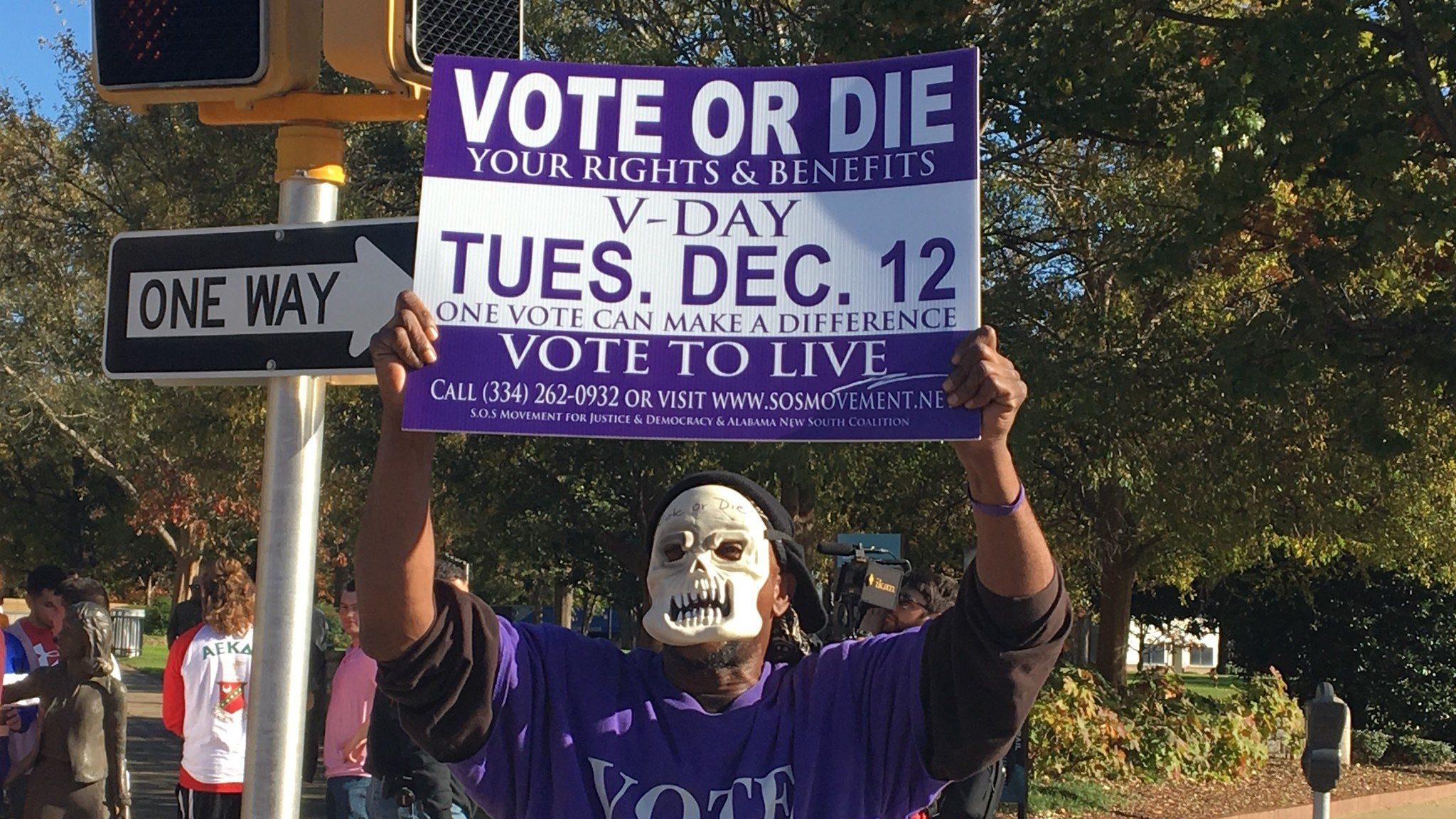by Curtis Price
The election of Democrat Doug Jones in Alabama December 12th sent shock waves through the political establishment. To put Jones’s victory in perspective, the last time a Democrat won a Senate race in Alabama was in 1992. For many in the orbit of the Democratic Party, the Alabama election signaled a shift and the beginning of a wider rejection of Trump.
But there were many unique features of this campaign that worked in Jones’s favor that may not be easily duplicated in other races. For one, Roy Moore was a spectacularly unsavory candidate even in terms of the already low standards of the Republican Party here. Moore, who had twice been removed from office as a judge for defying the law, represented for many Black voters the old Alabama of segregation and servitude. Roy Moore, in fact, ran far to the right of arch-segregationist George Wallace in the 1960s
It was the Black vote that decisively shifted the election to Jones. Black voters turned out in higher numbers than during the Obama election. And nearly all of these votes were Jones votes. Polls for instance, showed that 96% of Black voters went for Jones, with Black women going for Jones at even higher percentages. Black people mobilized – one activist group in Selma took the threat of Moore so seriously they organized a “Vote or Die” campaign -to bring out the Black vote. When combined with educated whites and disaffected Republicans, this was just enough to push Jones over the top.
However, what was striking is that the election centered almost entirely around personal allegations of Moore’s relationship with teenage girls and said little about the social and economic situation facing people living in Alabama. Alabama remains one of the poorest states in the U.S. with all the indicators of social misery this implies such as high Infant mortality and low high school graduation rates. On every measure of health and well-being Alabama fails miserably.
In the last weeks of the campaign, a United Nation observer visited the poor rural Black Belt region of Alabama, where the Civil Rights Movement of the 1960s started, and was shocked to find conditions that he said were the worse he had ever witnessed in a developed country (1). Raw sewage poured from trailers through improvised piping just feet away from where children played and researchers have discovered hookworm, a parasitic worm infection once widespread in the South but thought to have been eliminated over 50 years ago (2).
People living in these areas are forced to buy septic systems since the state doesn’t guarantee waste water disposal – and such septic system costs a year’s wages or more to install. The state instead just prosecutes people for not complying with sanitary regulations. In one of the more notorious cases of such prosecution, a grandmother on disability income was jailed a few years back for not installing a septic system (3). Yet just a few miles away from conditions worthy of a Third World shantytown are gleaming scientific research centers at the University of Birmingham.
In recent decades, Alabama has become a major automobile manufacturer – Toyota, Mercedes-Benz and Nissan are just a few of the plants that have opened up, lured by low wages and a non-union workforce. The percentage of people employed in manufacturing here is higher than most U.S states. And Alabama remains a major beneficiary of the military Keynesianism that developed the South. Redstone Arsenal in Huntsville, for example, occupies more space than the city itself and is the city’s major employer – and there are many such bases in the state.
But the cost of making the state attractive to industry has meant subsidies amounting to billions of dollars and tax “holidays” shifted to employers. The burden of such giveaways falls on Alabama’s working class and poor. Alabama is one of the handful of states that taxes essential goods such as food – at 9% on the dollar. Nearly 47% of state tax receipts come from such sales taxes; a regressive taxation imbalance that sets Alabama apart from other states. This lack of public investment in infrastructure has meant crumbling roads and bridges and higher disease and death rates than elsewhere. During the election, however, none of these issues was brought up by either side and there is no indication nearly a month later that Jones will make them any more a priority than previous Republican senators did.
Notes
The Huntsville Times (2017).UN poverty official touring Alabama’s Black Belt: ‘I haven’t seen this’ in the First World. Downloaded from http://www.al.com/news/index.ssf/2017/12/un_poverty_official_touring_al.html
The Guardian (2017) Hookworm, a disease of extreme poverty, is thriving in the US south. Why? Downloaded from https://www.theguardian.com/us-news/2017/sep/05/hookworm-lowndes-county-alabama-water-waste-treatment-poverty
The Florida Times-Union (2003). Poor in Alabama tell of fines and jail time over septic tanks. Downloaded from http://jacksonville.com/apnews/stories/042402/D7J3I1K81.html

